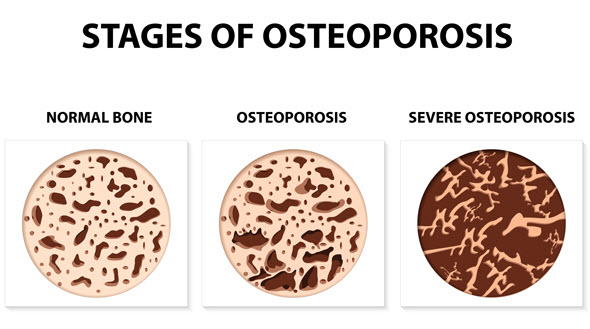If you’re approaching menopause and are concerned about your bone strength; If you’re a male with certain risk factors; if you have had a fracture of the spine, wrist, or hip; or if you have been told that you have osteoporosis or osteopenia (low bone mass; could turn into osteoporosis), UMass Memorial Health can help.
What is Osteoporosis?
One of the most common conditions affecting bone health is osteoporosis. Osteoporosis causes the bones to become thinner and weaker increasing the chances for a fracture. Bones in the hip, wrist and spine are particularly at risk for fractures due to osteoporosis. Although women are four times more likely to develop osteoporosis, it affects men as well.

If left unrecognized and/or untreated, osteoporosis can lead to fractures, often requiring surgery, prolonged rehabilitation, and loss of function and independence. However, in addition to treatment for underlying conditions, many medications are now available that can stabilize and increase declining bone density and reduce fracture risk.
Osteopenia is also a loss of bone mass and can progress to osteoporosis. Because there are no symptoms, you may not know you have it until you have a bone density test.
Osteoporosis Risk Factors and Causes
Osteoporosis is caused by the natural progression of aging and/or by side effects of medications. Sometimes there may be underlying primary conditions, like hormonal abnormalities that, if identified, can be corrected. Other risk factors include:
- Rheumatoid arthritis
- Smoking
- Excessive alcohol
- Eating disorders
- Premature menopause
- Calcium disorders
- Vitamin D deficiency
- Diabetes
Diagnosis
About 54 million Americans have osteoporosis and low bone mass. If you’re at risk or currently have osteoporosis, speak with your provider about a bone density (or DXA) scan and possible treatments.
After a bone density test, you’ll be given a number called a T-score. This score compares your bone density to that of a healthy young adult. Normal is zero. The more negative the number, the weaker your bones are and the more likely you are to fracture one. If your T-score is -2.5 or below at any of the sites measured, you have osteoporosis. If the T-score is between -1 and -2.4, then you have osteopenia.
If you have osteoporosis, your physician will also use a fracture risk calculator called FRAX. Your T-score, age, height and other data is entered. Your chance of having an osteoporotic fracture in the next 10 years is calculated. If there’s a 20% or higher chance of having a fracture in the spine, pelvis, hip, shoulder, or forearm, or a 3% or higher chance of a fracture in your hip, then medications to reduce your future fracture risk will likely be discussed.
Your physician will review results from your bone density test and look at your medical history and risk factors. Additional tests may be ordered to exclude primary diseases that may cause osteoporosis.
Resources
Living with Osteoporosis: Preventing Fractures
Living with Osteoporosis: Regular Exercise
Preventing Falls and Fractures
Osteoporosis Education and Information







 Exclusive Health Care Provider for the Worcester Red Sox.
Exclusive Health Care Provider for the Worcester Red Sox.